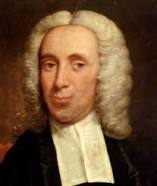What Are Hymns?
Hymns are religious songs or poems that praise God or a being considered superior by the person doing the praise.
When you say hymn, its origins are sourced from the Greek work hymnos which translates to a song of praise. They were originally written for the purpose of honoring the Greek gods.
For nearly two thousand years, the Christians have made music as a mode for their worship and these include hymns as well as psalms and other spiritual songs.
The apostle Paul wrote in the Bible to Speak to each other through hymns, psalms and also spiritual songs.
Hymnody, which comprises the composition or singing of hymns, has evolved throughout the centuries.
It has been influenced by new thinking and emerging religious beliefs. In the history of the Church, when there are signs of renewal, restoration or revival or even of struggle, new hymns have been created and sung.
In the Middle Ages, hymns were produced in the structure of Gregorian chants or plainsong. They were sung in Latin usually by choirs of monasteries.
Here comes the 16th century and the printing press was invented, and this resulted in greater access for the church faithful and worshippers to have better access to hymns in their printed forms. It was the popular German theologian Martin Luther, who motivated churchgoers to sing in unison the hymns when they are together in congregations.
Meanwhile in England, the minister Isaac Watts, who thought out of the box began in the early 18th century the progressive transformation of congregational singing of hymns and other forms of music worship.

Watts had this strong belief that hymns could be an outlet that could let people express their religious emotions.
Watts developed into a prolific writer who composed several new hymns.
He is considered the liberator of English Hymnody because his hymns made people extend their singing beyond just Old Testament psalms.
He inspired the faithful to sing with passion from the heart, blended with a deep faith and understanding.
During this same era, the Methodist movement, led by John Wesley, also greatly influenced how hymns evolved and developed inside the church.
Together with his sibling Charles, they developed hymns with simple rhythms and sang friendly melodies to help develop singing in the congregations.
They were the composers who wrote many of the popular and favorite hymns that we are using today in our churches.
Next comes the late 19th century and hymns were further developed into a new style called gospel.
These types of hymns were recognizable because they have strong lead vocals and have harmonies that have excitement in them.
They influenced greatly all over the world the modern hymn production.
Not to be outdone, the succeeding twentieth and twenty-first centuries have erupted with new talented composers with varying styles.
Old hymns have been refreshed with new tunes and also countless new hymns have sprung up and have also become popular.
Today, the church has become more colorful because of new musical resources to churn out more beautiful hymns which bring together the congregation into the mood for worship.
Below are more hymns’ lyrics and stories:
Rejoice, the Lord is King! Lyrics, Story, and Video
This Is the Day the Lord Hath Made Lyrics, Story, and Video